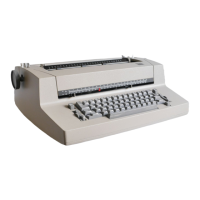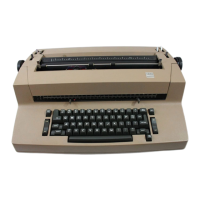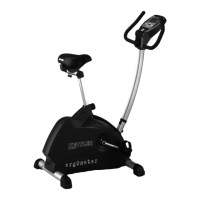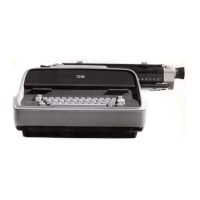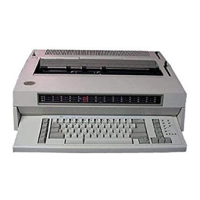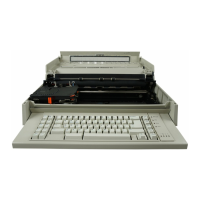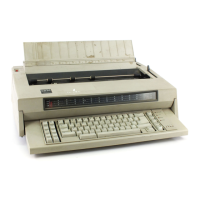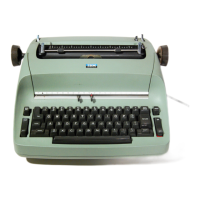
 Loading...
Loading...
Do you have a question about the IBM Selectric and is the answer not in the manual?
| Type | Electric typewriter |
|---|---|
| Introduced | 1961 |
| Keyboard Layout | QWERTY |
| Carriage Return | Electric |
| Manufacturer | IBM |
| Printing Technology | Typeball (golf ball) |
| Power Source | AC Power |
| Power Supply | 120V AC |
Outlines initial steps for cleaning and inspecting the printer before lubrication.
Details lubricant types and application methods based on machine usage and motion types.
Covers adjustments for drive belt, motor pulley, clutch pawls, and idler gears.
Explains adjustments for latch bail shaft and plate alignment for proper selector operation.
Details the specific adjustment procedure for the latch bail shaft plate to ensure proper cam contact.
Covers the adjustment of rotate and tilt differential guides for vertical alignment of links.
Step-by-step instructions for removing cycle clutch and cycle shaft components.
Procedures for replacing the drive belt on the cycle clutch and cycle shaft mechanism.
Provides steps for removing the rotate selection differential assembly.
Instructions for removing the operational magnet assemblies.
Troubleshooting guide for backspace mechanism issues and related adjustments.
Adjustments and troubleshooting flowcharts for spacing-related issues.
Diagnostic flowchart and adjustments for the print escapement mechanism.
Specific lubrication points for modified components in the reduced-function unit.
Outlines the five key adjustments for the cycle clutch magnet assembly.
Details the sequence and parameters for adjusting the cycle clutch magnet assembly.
